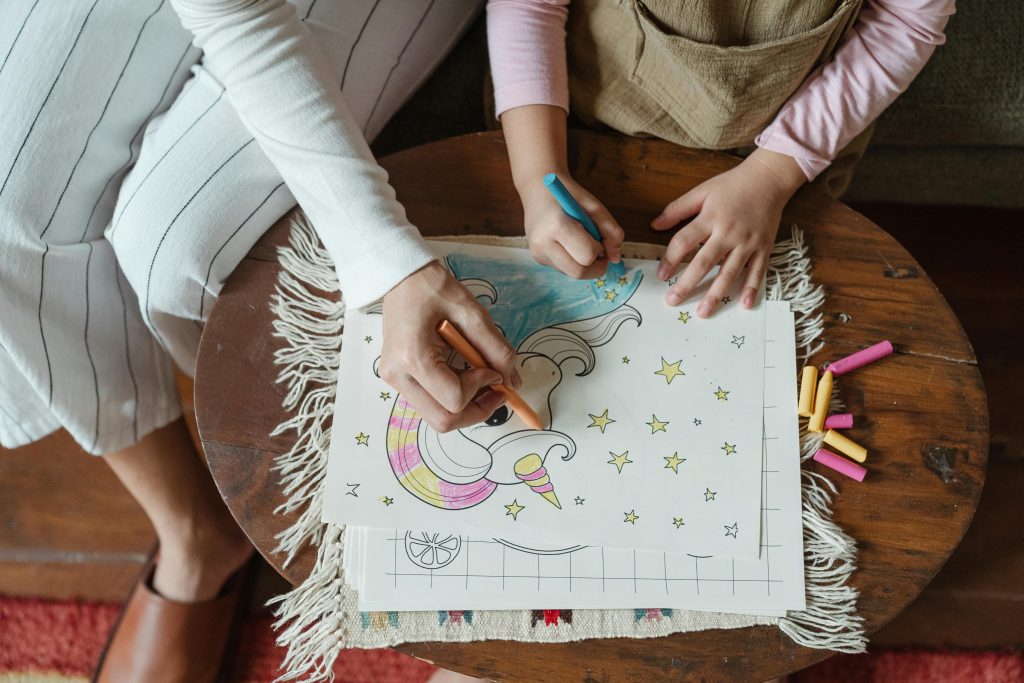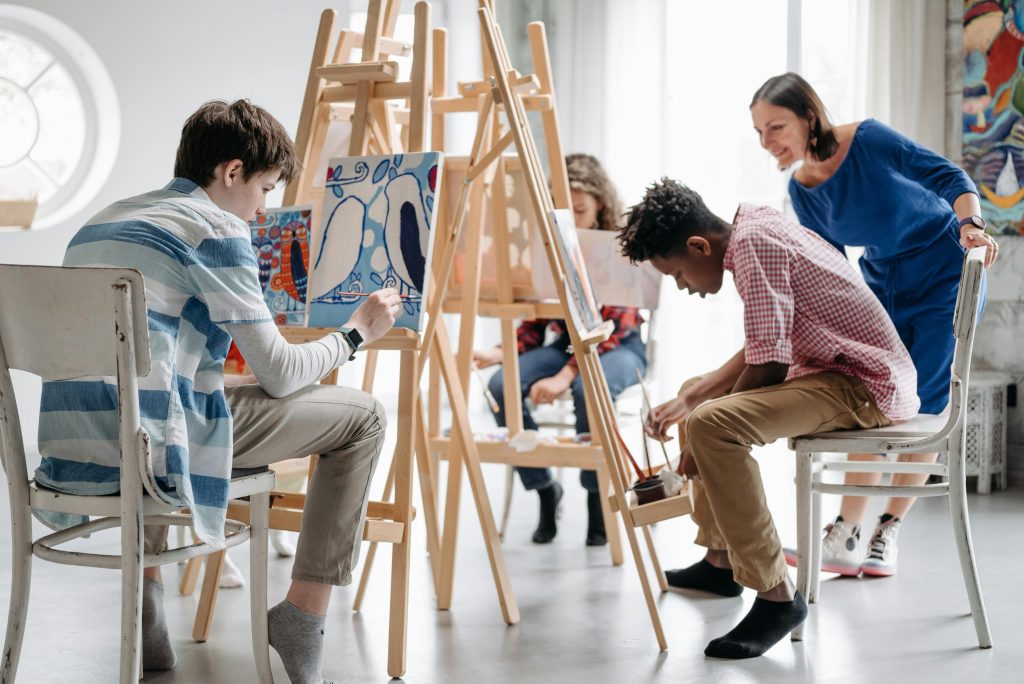Art education stands as a rich fabric of disciplines-music, theater, dance, and visual arts, reaching deep down into the souls of individuals across different backgrounds. In today’s society of mechanical automation, in which machines are increasingly taking over occupations that were once help and run by human hands, Hence, altering the structural lay-out of global workforce. On the other hand of the equation, faculties such as creativity, innovation, lateral thinking, and robust social skills reign supreme, dominating the market demands.
As The iconic Steve Jobs once stated “Innovation distinguishes between a leader and a follower”, underscoring the radically essential role of art education, beyond nurturing artistic talents and aesthetic orientations, to empower individuals with the essentials skills needed to navigate and shape the future.
The Concrete Benefits of Art Education, A Data Driven Perspective.
- Improves Academic Outcomes: According to a report by the Americans For The Arts, students engaged in art courses and craft experimentations exhibit higher GPAs and standardized test scores, in addition to lower dropout rates. Furthermore, Benefits observed in a verity of students segments regardless of their socio-economic status.
- Cognitive Benefits: Research published in The Journal of The American Art Therapy Association, puts forth an array of empirical data leading to the conclusion that engaging in art activities boosts brain function by strengthening neural connections and pathways, related to faculties such as fine motor skills, creativity, and problem-solving.
- Emotional Development: A Renown study in the journal Art Therapy found that 45 minutes of creative production of any kind, can significantly cut down on stress levels in the body.
- Social Skills and Empathy: Empirical findings from the renowned National Endowment for the Arts maintain that learners who frequently take part in the artistic process are more likely to show empathy towards other peers and engage in community services.
- Career Readiness: The Conference Board reports that creativity is among the top five applied skills sought by business leaders, with 72% stating that creativity is of high importance when hiring.
- Cultural Competence: UNISCO advocates for art education as a means for the cultivation of cultural diversity and cross-cultural dialogues, emphasizing the role of art in building cultural understanding and global awareness.

A Comprehensive Framework for Nurturing Innovation in Young Minds
Encourage Divergent Thinking
- Habitually pose open -ended questions that push children in the direction of exploration, diving into multiple solutions or interpretations.
- Encourage open brainstorming sessions without judging, discarding, or reducing ideas, fostering a frame of mind conducive to creativity without installing fear of failure.
- Leverage the open ended nature of activities such as “what if ?” scenarios, or alternative universe storytelling to stretch the fabric of imagination and stimulate divergent thinking.
Embrace Unstructured Play
- Make sure to keep a daily window in the schedule for unrestricted unguided playtime, allowing kids to explore and experiment with no predetermined rules or objectives.
- Present open ended play materials such as blocks, clay, or recycled materials, opening the space for unlimited possibilities and experimentations.
- Encourage outdoor play, engagement in the natural environment, stimulating creativity and imaginative faculties by engaging all senses, Hence offering endless inspiration.
Integrate Art Education Across Subjects
- Subtly imbed arts-based activities into various subjects, such as creating visual representations of scientific concepts of dramatically acting out historical events.
- Explore interdisciplinary projects that creatively fuse different art forms with other subjects, such as creative multimedia presentations of performances.
- Encourage and stimulate youngsters to actively express their own individual understanding of academic materials through artistic mediums.
Encouraging Collaboration and Connection
- Facilitate opportunities for collaboration and teamwork, atmosphere in which children can openly share ideas, build on each other’s, and co-create.
- Connect students with mentors, artists, or professionals in multiple values and perspectives to provide real-world inspiration, guidance, and constructive feedback
Cultivate a Growth Mindset
- Make sure to transmit the notion that creativity is a skill that they can develop through consistent practice and effort, rather then the cliché of creativity being an innate born-with talent.
- Provide constructive feedback that focuses on the process rather then the end product, prioritizing efforts, perseverance, and learning from past experiences.
- Model a growth mindset by exhibiting qualities such as resilience, flexibility, and a willingness to learn from failure and set backs.

In a nutshell, Art education is the key to unlock creative and innovative faculties in the raising generation. By fostering capacities such as empathy and divergent thinking, it equips individuals with the tools they need to navigate an ever-changing world.







